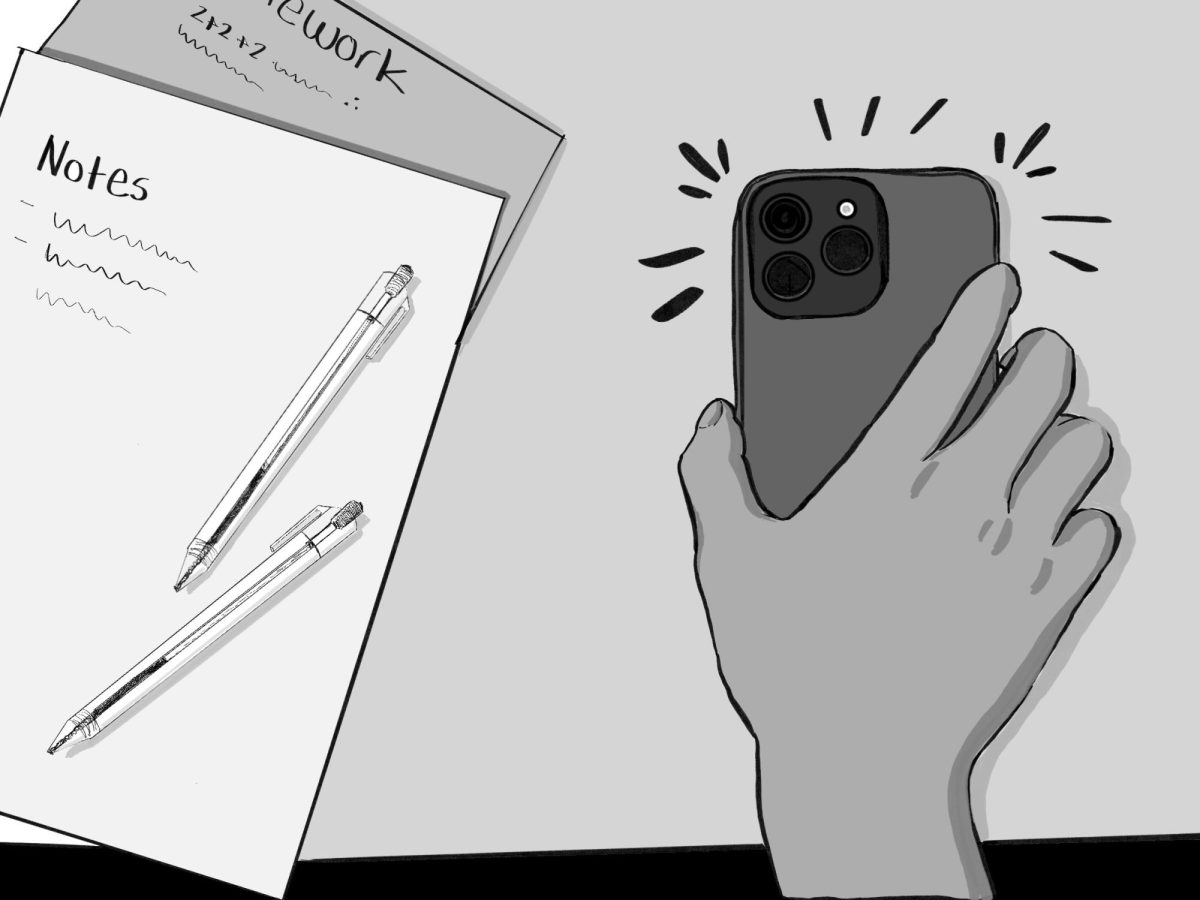When Steve Jobs announced a revolutionary new type of smartphone in 2007, neither he nor anyone else could have predicted its unprecedented impact on an entire generation of society . Almost all of us have been raised with constant access to an ever-present mobile device, giving us readily available updates on everything from the latest social media trends to our friends’ current locations with just a few clicks. 95% of American teenagers now have a smartphone, according to Statista. The fundamental changes to our psychology, culture, social lives and education phones have brought are incomprehensibly enormous and equally as dangerous.
We spend hours each week mindlessly refreshing our social media feeds to catch up with the news or our classmates’ vacations, chatting with friends through faceless text conversations and procrastinating on work in favor of quick dopamine hits from short-form content. As much as we teenagers hate to admit it, we’ve lost something tangible through our obsession with our phones. Real-world connections and meaningful passions have been traded away for instant gratification.
Though many students are obstinately opposed to the new phone policy, the school-wide phone ban on phones will give us a new opportunity to foster empathy and create deeper bonds with one another. It’s saving us from ourselves. Face-to-face interactions are more than just a nostalgic idea — they’re a critical part that foster our growth as individuals and members of a community. Through this, we can become more emotionally and socially present, both in our learning environment and with the humans around us.
The educational harms are even more apparent than the social harms. Our attention spans have been obliterated by ubiquitous 15- to 30-second video clips, which have trained us to become easily distracted. Even at school, students often spend their break time on the Quad staring at their phones instead of talking with their friends. Despite the ban of phones in class, the most screen-obsessed kids can be seen peeking at them under desks, which undermines a learning environment and distracts themselves from learning at hand. At this point, the best solution increasingly seems to be an outright ban — allowing these urges to be fully put to rest.
Phone usage has permeated every facet of our lives, whether at home or at school, whether alone or with friends. Beyond just distracting us, excessive phone usage has profound implications for our mental health. Research from Columbia University has consistently shown that the more time we spend on our devices, the more likely we are to experience symptoms of anxiety, depression and loneliness. Social media feeds create a cycle of comparison and self-doubt, making it harder to focus on personal growth and well-being. The most prominent example is Instagram’s stories feature, which offers an endless photo gallery of classmates dancing at concerts or traveling to exotic locales. We only see the highlights of other people’s experiences, which triggers an ever-present fear of missing out—the anxiety that we’re not having the same exciting lives as our peers.
How the school handles the specifics is a question we have the rest of the year to figure out. Should seniors be able to take their phones off-campus? Is it acceptable if phones stay undisturbed in lockers and backpacks during school, or do they need to be confiscated at the beginning of the day? What if a student needs to call a parent during an emergency? These are legitimate points for debate, but we shouldn’t lose sight of the bigger picture—that phones have completely disrupted the way we relate to others and ourselves, and the school is helping us see these impacts. We should approach the next school year with an emphasis on healing and connection, and that requires us to see each other face-to-face, not separated by the invisible barrier of our phones. It’s natural for students to be wary of such a huge change, we but need to put our trust in the new policy and make an active effort to create a stronger community in line with the administration’s vision.


































